|
|
Air Force Units
|
 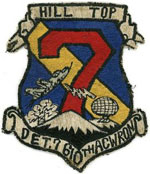
|
Aircraft Control & Warning Squadron
Subordinate to: 527th AC&WG
Located: April 1948, Zaitozake, Kyushu, Japan
Relocated: 7 September 1956, From Itazuke Air Base, Japan, to Seburiyama Air Station Japan
Commander:
1947, Major William J. Smith
1948, Major Robert J. Stevenson
Equipment:
1948, AN/TPS-1B
April 1949, AN/CPS-4
Detachment 7
Site 9
Located: 1948, Susa, Japan
Note: 1 July 1949, operational jurisdiction of Site #9 will be assumed by the 618th Squadron
Detachment 19
Note: During July 1950, Detachment 1 of the 618th was deactivating and shipping equipment to this detachment.
Site
Located: 1948, Seburi-Yama
Mission: Direction Finding Station
Site
Located: 1948, Noji, Kyushu, Japan
Site
Located: 1950, Nomo-Saki, Japan
Site
Located: 1950, Nomaike, Japan
|
|
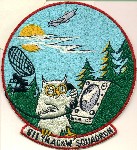
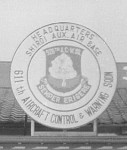
|
Aircraft Control & Warning Squadron
Korea
1946 – (?)
Note: 1 August 1946, all personnel from 35th Fighter Control Squadron, Second Detachment, assigned to newly activated 611th Aircraft Control and Warning Squadron.
Subordinate to: 6041st Air Base Group
Subordinate to: January 1952, 528th Aircraft Control and Warning Group, 35th Fighter-Interceptor Wing, 314th Air Division, March 1952, Japan Air Defense Force.
Commanders:
January 1952, Major Robert L. Nelson
February 1952, Major William D. Frymire
April 1952, Lt. Colonel Richard W. Hahn
Equipment: SCR-270, 1952; AN/TPS-10D;
Detachment 4
Located: 1952, Shiroi, Japan
Mission: 1952, Ground Controlled Interception
Note: January 1952, Specialized training for enlisted controllers conducted at Det 4.
Commanders:
February 1952, Major William D. Frymire
March 1952, Captain John R. Dear
Detachment 22
Located: 1952, Omaezaki, Japan
Commanders:
1952, 1st Lt. Walter L. Wichita
Detachment 23
Note: Location first occupied by United States Air Force personnel for radar purposes on 28 October 1948.
Redesignated: 27 December 1957, from Detachment 23, 621st Aircraft Control and Warning Squadron to Detachment 23, 611th Aircraft Control and Warning Squadron.
Subordinate to: 1958, 6041st Air Base Group, 41st Air Division, 5th Air Force, Pacific Air Force.
Located: 1958, Wajima, on the Nato Peninsula, Honshu, Japan
Commanders:
1958, Major Odell S. Meredith
24 December 1958, Major Vernon K. Yeale
Equipment: 1958, AN/TPS-10A/D (probably the "D" model); 1958, AN/TPS-3A
Detachment 24
Located: 1952, Haranomachi, Japan
Commanders:
1952, Captain John R. Dear
February 1952, 2nd Lt. Norris W. Coiner
May 1952, Captain Howard W. Beaver
Detachment 26
Mission: 1952 To operate and maintain an Intercept Surveillance Station as part of the integrated Air Defense System for the 41st Air Division. Its purpose being to conduct Air Defense Operations within the sub sector area of responsibility assigned to the Commander, Detachment 44, 611th Aircraft Control and Warning Squadron. The unit was responsible for providing for the operation and maintenance of an Alternate Air Defense Center, which was to be implemented upon instructions from the Commander 41st Air Division.
Equipment: 1958, AN/TPS-10D, S/N 116; 1958, AN/GPX-7, IFF)
Detachment 27
Commanders:
1958, Major James M. Wood Jr.
Detachment 38
Located: 1951, Hitachi, Japan
Note: Late 1951/Early 1952 received new radar set with a range of 210 miles
Commanders:
1952, 2nd Lt. Norris W. Coiner
February 1952, 2nd Lt. Howard D. King, originally assigned as Assistant Detachment Commander
March 1952, Captain Kenneth C. Wilson
Equipment: January 1952, SCR-270
Detachment 44
Located: 1958, Yokota, Air Base, Japan
Mission: 1958, to operate and administer an Air Defense Direction Sector within its sub sector of responsibility as part of the integrated Air Defense System of the 41st Air Division.
Detachment 46
Mission: 1958, Was responsible for air surveillance and defense of tn assigned sector within the 41st Air Division. this included detection, display, identification and forward telling of all aircraft to the Air Defense Control Center. Further responsibilities of this organization were to initiate the scramble of fighter-interceptor aircraft for the purpose of identification of unknown and the destruction of hostile aircraft; to give navigational and other aids to friendly aircraft; to initiate and to conduct air sea rescue missions; and to assist in and conduct tactical missions as directed. Further responsibility was the training of USAF and Japan Air Self Defense Force Personnel in Aircraft Control and Warning procedures and tactics to accomplish the above mission.
Commanders:
1958, Major John C. Bonson
Equipment: 1958, AN/FPS-3, AN/FPS-6
Exercises:
1958, Blue Moose
|
| |
Tactical Control Flight
Alzey, Germany
1976 – 1978
Call Sign: Mutate Control
Notes: Originally Det 3 601st TCS
|
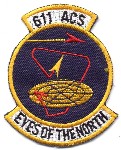 |
Air Control Squadron
Roster
|
|
| |
Aircraft Control & Warning Squadron
Activated: 23 July 1946, Japan
Subordinate to: 527th AC&WG
Inactivated: June 1948
Located: 1958, Ajo Air Force Station, Arizona
Mission: 1958, To operate and maintain a Direction Center under the operational control of the 684th Aircraft Control and Warning Squadron, Mount Lemmon Air Force Station, Arizona.
Commanders:
q948, Major Clarence M. Caldcleag
Lt. Col. Branstetter
Equipment: 1958, AN/FPS-20A, AN/FPS-6A
|
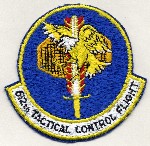 |
Tactical Control Flight
Prum, Germany
1976 – 1978
Notes: Originally Det 27, 601st TCS
Relocated: 1989, Zwiebrucken AB, Germany
Subordinate to: 601st Tactical Control Wing, Sembach, Air Base, Germany
Deactivated: 1991
Call Sign: Jeremiah
Commanders:
1989 - 1991, Lt. Col. Robert "Bob" Prior, Jr.
Roster
|
|
| |
Aircraft Control & Warning Squadron
Unit formed: 1947
Subordinate to: 511th AC&WG
Located: 1950, Misawa Air Base, Japan, JR2
Mission: Tactical Air Control Center
Subordinate to: 1950, 49th fighter Bomber Wing
Relocated: February 1950, Kushir0, Eastern Hokkaido, Japan, for seven weeks.
Subordinate to: Feb/March 1950, 49th fighter Bomber Wing
Mission: 19 July 1951, Maintain a state of combat readiness of men and equipment and provide effective radar coverage in the Northern Air Defense Area. Specific missions within the scope of the above mission will be:
a. Operate EW (Early Warning) Sites, Misawa GCI and Misawa ADCC 24 hours a day, 7 days a week except for maintenance periods.
b. Insure that all Early Warning Sites are capable of accurately plotting all aircraft entering their areas, and that they forward plots immediately to Headquarters, Northern Air Defense Area.
c. Maintain maximum practicable primary and back-up[ communications and GCI nets.
d. Maintain ground to air VHF communications at each radar site and tactical control center.
e. Assure that the Misawa ADCC is capable of receiving plots and classifying all aircraft entering the Northern Air Defense Area.
f. Provide the control of aircraft made available for interception purposes.
g. Provide VHF/DF facilities and secondary navigational aids.
h. Assist tactical units of this command in execution of current air defense and air dispersal plans.
i. Procure necessary equipment for, train and maintain in a state of readiness Tactical Air Control Parties as directed.
j. Provide necessary logistical support for TACP's on the island of Honshu.
k. Establish at Chitose Air Base adequate technical supplies for the re-supply of all the radar sites on the island of Hokkaido and its off-shore islands.
Note: 25 August 1951, all sites transferred to 848th Aircraft Control and Warning Squadron (AFHRA K0370).
Note: 1 March 1955, the 511th Aircraft Control and Warning Group deactivated, and 613th became a separate squadron with outlying radar detachments reporting directly to the Air Division.
Mission: 1955, To maintain continuous radar surveillance and training to sustain a high degree of efficiency in the identification and control of aircraft and to render navigational assistance to friendly aircraft in the area of responsibility in the Northern Defense of Japan.
Notes: Turned over to the Japanese in 1961.
Equipment: primary search radar SCR-270; gap filler used the TPS-1B 1950 (K0370.pdf pg 372) ; TPS-10D; October 1951, AN/CPS-1; October 1951, AN/CPS-4; October AN/CPS-5
Commanders:
1950, Major James Larson
(?) - December 1950, Lt. Colonel Harry H. Culler
3 December 1950 - (?), Lt. Colonel George H. Sutherlin
August 1951, Captain Eugene Olsen
1952, Major Willis
May 1952, Lt. Colonel Paul E. Anderson
1952, Major Lloy C. Fillis
September 1952, Major Edwin L. Murrill
(?) - 20 May 1955, Major David Whitaker
20 May 1955 - (?), Lt. Colonel Joseph P. Bates
Site 2
Mission: 1950, Air Defense Control Center
Commanders:
1950, Captain Oswaldo G. Cuarrnero
1950, Captain Eugene M.R. Olson
Equipment: 1950, AN/TPS-1B; 1950, two CPX (IFF) systems; 1950, AN/CPS-1; 1951, CPS-4;
Note: 1950, Radar Maintenance personnel maintained the AN/APN-60 rosebud aircraft.
Note: August 1950, the TPS-1B was installed in a VHF van for the purpose of using it as a back-up search radar set.
Site 14
Commanders:
1950, 1st Lt. Donald f. Bouxou
1950, 1st Lt. Fred C. Greenwald
1950, Captain Earle H. Young
1951 Captain Wesley Weiman
(?)1951 - January 1952, 1st Lt. Leon B. Stephens Jr.
January 1952, 1st Lt. Norris H. Lewis
1952, 1st Lt. J.C. Talley
Equipment: 1950, AN/TPS-1B, shipped out November 1951; 18 November 1951, AN/TPS-1C
Site 16
Commanders:
1950, 1st Lt. Harold D. Barclay
1951, 1st Lt. Richard J Shad(?)
10 January 1951, Captain Victor E. Opincar
Equipment: 1950, AN/TPS-1B, equipment modified in 1950 with a rheostat to permit slow antenna RPM's, a PPI range delay and an extra type R.F. system heater.
Note: During December 1950, gale force winds blew away radome and antenna.
Site 18
Located: 1950, Wakkamai, Hokkaido, Japan
Commanders:
1950, 1st Lt. John C. Hildebrand
1950, Wesley L. Weiman
1951, 1st Lt. Harold D. Gra...(?)
(?) - 5 May 1951, Captain Wesley L. Weiman
30 April 1951 - 1 June 1951, Captain V.E. Opincar
1 June 1951, Captain E. Young
Equipment: 16 September 1950 & 1951, SCR-270DA; 1950 & 1951, AN/TPS-1B
Detachment 29
Commanders:
Site 30
Commanders:
1950, Captain Edward A. Harbula
1950, 1st Lt. Billie J. Wetzel
1951, Captain Victor Opl.c..r.(?)
1951, Captain Walter R. Goodrich Jr.
Equipment: 1951, AN/TPS-1B
Site 32
Located: July 1950, Matsumno(?), Hokkaido (?), Japan, the Southeastern tip of Hokkaido, Japan
Commanders:
1950, Captain Fred W. Snyder
1950, 1st Lt. Albert E. Brawley
1950, Captain Eugene M.R. Olsen
1951, Captain Albert E. Brawley
Equipment: 1951, AN/TPS-1B; 25 July 1951, AN/TPS-1C
Site 34
Located: August 1950, Shiriya-Saki, Honshu, Japan, the Northern most tip of Northern Honshu, Japan
Note: First personnel arrived on 8 August 1950.
Commanders:
1950, Captain Freddie Hutchins
(?) - 22 October 1951, 1st Lt. Lavern A. McQueen
22 October 1951 - 8 June 1952, 1st Lt. Stuart E. Aites
8 June 1952, 1st Lt. Richard L. Lange
1952, 2nd Lt. Edward F. Capron
Equipment: 12 August 1950, AN/TPS-1B; 16 June 1951, AN/TPS-1C
Site 36 (of 848th Aircraft Control and Warning Squadron, but under the operational control of the 613th Aircraft Control and Warning Squadron).
Located: 1950, Kogane-Saki, Honshu, Japan, due east of Misawa. Site was located one mile North of the town of Hirishi, Japan.
Located: 1951, Krimo-Saki, Japan
Commanders:
1951, Captain Earle H. Young
Located: 1955, near Samani, in South central Hokkaido, Japan
Note: September 1955, Detachment returned to control of 613th Aircraft Control and Warning Squadron.
Equipment: 1950, AN/TPS-1B; 1951, SCR-270DA; 1955, AN/FPS-3
Visual Warning Site
Located: 1950, Mori, Hokkaido, Japan
Detachment JR14
Located: 1955, Funagawa, Japan
Commanders:
(?) - 6 January 1955, 1st Lt. Joseph M.Podolinsky
6 January 1955 -23 February, 1st Lt. Donald M. Lorton
23 February 1955 - (?), Captain George C.A. Barbour, Jr.
Equipment: 1955, AN/TPS-1B;
Inactivated: 1 November 1955, Personnel and equipment transferred to Detachment JR33.
Detachment JR29
Located: 1955, Okushiri Shima, on an island off the Southwestern coast of Hokkaido
Commanders:
1 January 1955 - 6 May 1955, Captain Richard M Saurer
6 May 1955 - (?), 1st Lt. Wayne W. Dillard
Equipment: 1955, AN/FPS-3, AN/FPS-4, AN/UPX-6
Detachment JR33
Located: 1955, Kamo, Japan
Note: Late November 1955, became operational
Commanders:
6 January 1955 - 12 May 1955, ?/Sgt Carl Manscot(?)
12 May 1955, M/Sgt Earl A. Adams
Equipment: 1955, AN/FPS-3, AN/FPS-6
Detachment JR37
Located: 1955, Kurosaki, Japan, on Eastern Coast near Yamada
Equipment: 1955, AN/FPS-3A, AN/FPS-6
Note: July 1955 - December 1955, Detachment remained dormant.
Detachment JR42
Located: 1955, Tomari, Japan, on the Northeastern Coast near Funagawa
Note: July 1955 - December 1955, Detachment nearing completion.
|
|
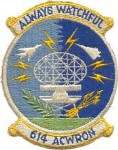 |
Aircraft Control & Warning Squadron
Organized: 1 August 1946, Hickam Air Force Base, Oahu Island, Hawaii (AFHRA A0531A)
Note: Personnel obtained through transfer from Company A, 580th Signal Aircraft Warning Battalion.
Activated: 1 August 1946, Kahuka Field, Oahu, The Hawaiian Islands
Transferred: 1 August 1946, Fort Shafter, Oahu, The Hawaiian Islands
Personnel: 1 August 1946, authorized: 19 Officers, 226 Enlisted
1 August 1946, 11 Officers, 220 Enlisted
1 September 1946, 10 Officers, 210 Enlisted
1 October 1946, 20 Officers, 213 Enlisted
1 November 1946, 16 Officers, 205 Enlisted
1 December 1946, 19 Officers, 228 Enlisted
31 December 1946, 18 Officers, 202 Enlisted
Mission: 12 January 1949, Train personnel in the installation, operation, and maintenance of organizational equipment, and operate two (2) limited GCI radar stations (Detachment A and Detachment B). Operate and Maintain the Air Defense Control Center in the Hawaiian Islands, as well as operate and maintain the "Homer Station" on Oahu.
Subordinate to: 81st Figher Wing, Wheeler Air Force Base, Oahu, The Hawaiian Islands
Note: The 614th Aircraft Control & Warning Squadron, with its headquartes at Fort Shafter, Oahu T H, was comprised of five (5) subordinate detachments, stationed at various locations on the Island of Oahu. With the exception of Detachment "F", with its station at Kokee, Kauai, The Hawaiian Islands.
Reorganized: 20 January 1949, Authorized strength of fourty-five (45) officers and four hundred and sixty-eight enlisted was reduced to 10 officers and one hundred and twenty-eight enlisted.
Mission: 20 January 1949, To provide Microwave Early Warning Service eight (8) hours per day, per station, provide limited Ground Controlled Interception service to all organizations possessing tactical aircraft in the Hawaiian area, operate and maintain a continuous VHF/DF service in support of Air Sea Rescue facility, operate and maintain an High Frequency Radio Net between squadron headquarters and detachments of this squadron, to provide a back-up for existing wire circuits and an outlet for emergency reports in case of communication failures; train personnel in the installation, operation, and maintenance of organization equipment, and operate under designated unified commanders for defense of the Hawaiian area.
Personnel: January 1949, 46 Officers, 3 Warrant Officers, 434 Enlisted and 2 Civilians.
Note: January 1949, one station in full operation; Detachment E limited operation; It was decided that Detachment E should be deactivated.
Relocated: February 1949, Hickam Air Force Base, Oahu, The Hawaiian Islands
Personnel:
1 February 1949, 25 Officers, 3 Warrant Officers, 205 Enlisted and 2 Civilians
1 March 1949, 23 Officers, 3 Warrant Officers, 160 Enlisted and 2 Civilians
1 April 1949, 10 Officers, 2 Warrant Officers, 139 Enlisted and 2 Civilians
1 May 1949, 10 Officers, 2 Warrant Officers, 134 Enlisted and 1 Civilians
1 June 1949, 10 Officers, 2 Warrant Officers, 134 Enlisted and 1 Civilians
Located: December 1959, Marine Corps Air Station, Cherry Point, North Carolina
Mission: 1959, to obtain, evaluate and disseminate promptly and accurately information on all aerial activity within the designated area of responsibility. To conduct those functions of surveillance and weapons control necessary for the successful air defense of the area. To achieve and maintain, through continued training, the highest possible level of operational effectiveness.
Commanders:
1 August 1946 - 17 September 1946, Captain John C. Bonson
17 September 1946 - 1 October 1946, Captain Milton A. Taylor
1 October 1946 - (?), Captain John M. Brittain
(?) - 20 January 1949, Lt. Colonel Kenneth W. Klise
21 January 1949 - (?) Major George H. Armstrong Jr.
1960, Major William W. Anderson Jr.
1960, Major Oscar T. Cox
1962, Major Frank Davis Jr.
Equipment: 1959, AN/FPS-6A, AN/FPS.8, AN/FPS-14 (two each)
Detachment A
Located: 1946, Fort Shafter, Mt. Kaala, Oahu, The Hawaiian Islands
Note: 26 January 1949, Declared excess to the needs of the command
Commanders:
1946, 1st Lt. J.E. Williams
Detachment B
Located: 1946, Kahuku, Oahu, The Hawaiian Islands
Commanders:
1946,
Capt. C.H. McIsaac
1950, Captain John K. Remhow(?)
Equipment: 12 January 1949, as specified by order (unknown if it was actual) AN/CPS-1 and AN/TPS-10B, or substitute.
Detachment C
Located: January, 1949, Koko Crater, Oahu, The Hawaiian Islands
Note: January 1949, because it was impossible to erect a temporary station at Koko Crater because it involved a major undertaking. An appropriate site was found at Koko Head in a area adjacent to Koko Crater. Although this site was not desireable because of its limited elevation, it was utilized as a temporary station.
Equipment:
12 January 1949, AN/CPS-1 and AN/TPS-10B, or substitute.
VHF/DF, continuous service
Detachment D
Located: January 1949, Kaena Point, Oahu, The Hawaiian Islands
Note: 26 January 1949, Declared excess to the needs of the command
Detachment E
Located: January 1949, Puu Manawahua, Oahu, The Hawaiian Islands
Note: January 1949, Detachment was closed. Declared excess to the needs of the command
Detachment F
Located: January 1949, Kokee, Kauai, The Hawaiian Islands
Note: 26 January 1949, Declared excess to the needs of the command
Equipment:
1949, AN/CPS-1, equipment transferred to Detachment C
|
|
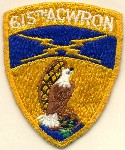
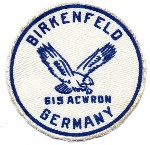
|
Aircraft Control & Warning Squadron
Prum, Germany
Redesignated: 1 August 1946, from 580th Signal Aircraft Warning Battalion to the 615th Aircraft Control and Warning Squadron (ref IRIS A0531A)
Located: 1953, Schonfeld Site No. 2 Germany; station opened 1 September
1953 (as 114th AC&W)
Reorganized: as 615th Aircraft Control & Warning Squadron, 1 November, 1953 (See 114th AC&W)
Subordinate to: 1953, 526th TCG, Twelfth Air Force
Mission: 1958, Surveillance and direction of interceptors and missiles for destruction of enemy airborne weapons through the media of radar and air/ground communications. Direction of offensive tactical strike forces to their target or to a contact point for handoff to a TDP, and their recovery, both through the media of radar and air/ground communications.
Subordinate to: 1958, 501st Tactical Control Wing
Personnel: January - June 1958, Authorized 81 Officers, 525 Airmen, 19 Civilians, Total 625
Personnel: July - December 1958, Authorized: 60 Officers, 425 Airmen, 18 Civilians, Total 503
Neubruecke, Germany
Located: 1 January 1958 - 30 June 1958, Schonfeld, Germany (Known dates)
Mission: 1958, Control and Reporting Post
July 1964 – June, 1965
Commanders:
1946, Captain G.E. Hunsucker
8 August 1956 - 1958, Lt. Colonel John Kersch
Inactivated: 1 October 1986
Equipment:
1958
AN/GPS-4 Search Radar
AN/MPS-14 height Finder
AN/MPS-16 Height Finder, Received June 1958
AN/MSQ-1
AN/MSQ-1A
AN/GPX-20 IFF
AN/GPX-17 IFF
AN/TPS-10D (2 each)
AN/TPS-1D
AN/MPS-11
Detachment
Located: December 1954, Mausdorf, Germany
Detachment
Located: December 1954, Regensburg, Germany
Detachment
Located: December 1954, Mausdorf, Germany
Detachment 1
Located: July - December 1955, Rothwesten, Germany (Known dates)
Located: July 1956 - June 1957, Duren, Germany (Known dates)
Detachment 2
Located: July - December 1956, Sc_lthorpe, England (Known dates)
Detachment 3/Operating Location 3
Located: July - December 1955, Rothwesten, Germany (Known dates)
Located: July 1955 - December 1958, Adenan, Germany (Known dates)
Detachment 4
Located: July - December 1955, Duren, Germany (Known dates)
Detachment 5
Located: July - December 1955, Driedorf, Germany (Known dates)
Photo: by Claudio Becker
Detachment 6
Located: July 1955 - June 1957, St. Andreseburg, Germany (Known dates)
Located: July 1957 - December 1957, Dri_dolf(?), Germany (Known dates)
Detachment 7/Operating Location 7
Located: July 1955 - June 1957, Adenau, Germany (Known dates)
Located: July 1957 - December 1958, Erbeskopf, Germany (Known dates)
Equipment: 1958, AN/MSQ-1A
Detachment 8/Operating Location 8
Located: January 1957 - December 1958, Birkenfeld, Germany (Known dates)
Detachment 9
Located: January 1957 - June 1957, Hertegenbush(?), Holland Known dates)
Detachment 10/Operating Location 10
Located: July - December 1955, Wasserkuppe, Germany (Known dates)
Located: July 1957 - December 1958, Duren, Germany (Known dates)
Detachment 11
Located: July - December 1955, Birkenfeld, Germany (Known dates)
Detachment 12
Located: July - December 1955, Winterberg, Germany (Known dates)
Site
Located: December 1954, Adneau, Germany
Site
Located: December 1954, Driadorf, Germany
Site 2
Located: June 1956, Schonfeld, Germany
Operating Location 6
Located: January - December 1958, Stein, Germany (Known dates)
Operating Location 11
Located: July 1958 - December 1958, Erbeskopf, Germany (Known dates)
Exercises:
1958
Saber Hawk - airborne support for the 7th Army's late winter exercise
Full Play - test of the result of Operation New Look
Web Site: Link |
|
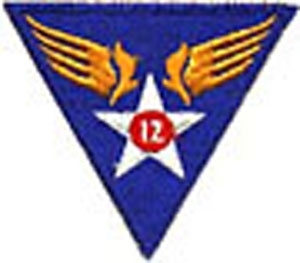
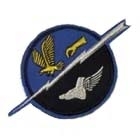
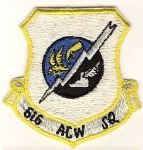
|
Aircraft Control & Warning Squadron/Tactical Control Wing, Provisional
Redesignated: 2 July, From the 581st Signal Aircraft Warning Battalion.
Commander: Capt. C.H. McIsaac
Redesignated: 1 August 1946, the 318th Fighter Control Squadron was Redesignated 616th Aircraft Control and Warning Squadron and assigned to 526th Aircraft Control and Warning Group.
Ft Shafter, Hawaii
Subordinate to: 1 August 1946, 526th Tactical Control Group
2 July, 1946 – 11 December, 1948
Kahuku, Hawaii
Note: See 123rd Aircraft Control and Warning Squadron. 1 November 1953, Became the 616th Aircraft Control and Warning Squadron.
Located: 1954, Neu-Ulm, Germany
Subordinate to: 526th Tactical Control Group, Twelfth Air Force, USAFE
Note: January-June 1957, Designated Tactical Control Wing, Provisional
Located: 1958, Flandern Kaserne, Ulm, Wasserkuppe, Germany; main operational site located at Turkheim, Germany
Mission: 1958, To operate and maintain a control Reporting Post in the Southeastern Track Production Area as defined by 501st Tactical Control Wing Operations Order 202-58, which reports to, and is under the operation control of the 604th Aircraft Control and Warning Squadron Control Reporting Center. To operate and maintain a Mobile Reserve Control Reporting Center. The function of this unit is to provide a limited CRC function when required. It is equipped and organized so as to be capable of deployment on a highly mobile basis as an individual unit. This facility is normally operated on an eight hour per day, five days a week basis and if placed on 24 hour operation augmentation of personnel can be expected.
Personnel: 1958, 51 Officers, 456 Airmen, and 7 civilians
Note: Main operating site was located at Turkheim, Germany
Subordinate to: 1958, 526th Tactical Control Group, Twelfth Air Force, USAFE
Note: Operations Order 202-58 with code name "New Look," directed the realignment of the existing Tactical Control System operated by the 501st TCW. The complete realignment was implemented though a series of directives published by the 501st TCW. The end result of the realignment was a three track production area system. the transition into the realignment system required a period of four months. The realignment as pertains to his unit, changed the mission from the operation of a Control and Reporting Center to a Control and Reporting Post. Upon making this change, the operational requirements and functions of this unit were greatly reduced. The final posture of the realignment resulted in the squadron operation location at Turkheim functioning as a CRP and reporting surveillance information only to the Southeastern Track Production Area CRC located at Freising (604th AC&W Squadron).
Relocated: November 1958, Boeloke Kaserne, Germany
Commanders:
1946, Captain C.H. McIsaac
1958, Lt. Colonel Edwin L. Murrill
Equipment: MPS-14 (Photos 1955), MPS-11 (Photos 1955); 1958, AN/MPS-11, AN/MPS-14, AN/MPS-16, AN/GPS-4
Detachment 1
Located: 1955 -1956, Freising, Germany (Known dates)
Detachment 2
Located: 1955 - 1956, Hegenaberg, Germany (Known dates)
Detachment 4
Located: 1955 - 1956, Landshut, Germany (Known dates)
Operating Location 1
Located: 1958, Lauterberg, Germany
Operating Location 6
Located: 1958, Pforzheim, Germany
Mission: 1958, Mobile Reserve Control and Reporting Center/CRC
Equipment: 1958, AN/MPS-11
Exercises:
1958
Slam Bam - Exercise designed to test the capability of the Tactical Control System in Germany
Roster
Miscellaneous Photos
History by David Parker |
|
| |
Aircraft Control & Warning Squadron
Redesignated: 1 August 1946, from 581st Signal Aircraft Warning Battalion to 617th
Located: 1949, Kokee, Kauai, The Hawaiian Islands
Activated: July 1954 at
Otis AFB, Massachusetts as the 532nd AC&WG (Mobile)
Discontinued: December 1954
Commanders:
1946, Major Karkalas
(?) - 20 January 1949, Major George H. Armstrong Jr.
Detachments
|
|
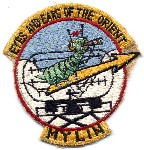
|
Aircraft Control & Warning Squadron
Located: 1 August 1946, Fort William McKinley, Luzon Is. P.I.
Located: 1946, Tagaytay Ridge
Note: January 1947, Squadron will be manned with an authorized strength of 35 Officers, two warrant officers and three hundres ninety eight enlisted men. The composition of the Squadron was to be furnished under seperate cover.
Notes: Reduced to zero (0) strength 25 March 1947
Notes: As per AG 322 Date Unknown. With the reduction of AAF units in the Philippines they will be redeployed to remain in Philippines, status: manned.
Located: 1948, Honshu, Japan (Hanshin)
Relocated: June 1949, Miho Air Base, Japan
Subordinate to: 1950, 527th Aircraft Control and Warning Group, 8th Fighter-Bomber Wing, Fifth Air Force
Personnel: July 1950, 38 Officers and 407 Enlisted
Personnel: August 1950, 38 Officers, 398 Enlisted
Subordinate to: December 1950, 587th Aircraft Control and Warning Group, 6160th Air Base Wing, 314th Air Division.
Relocated: January 1951, Kokura, Kyushu, Japan
Commanders:
(?) - 21 June 1948, Lt. Colonel Edward C Habberstad
21 June 1948 - (?), Lt. colonel Mullen
2 June 1950, Major Joseph E. Conklin
6 June 1950, Lt. Colonel Edger B. Gravette
29 July 1950, Major Joseph E. Conklin
3 September 1950, Captain G.F. Pennington
9 September 1950, Major Joseph E. Conklin
Equipment: AN/CPS-1; 1950, AN/TPS-1B; July 1950, AN/CPS-5, AN/CPS-6, AN/CPX-2
Detachment 9, 610th Squadron
Located: 1948, Susa, Japan
Note: 1 July 1949, Detachment 9 of the 610th Squadron, operational jurisdiction of Site #9 will be assumed by the 618th Squadron.
Detachment 1
Deactivated: July 1950, throughout the month of July had been deactivating. Large portion of the equipment located at the detachment was shipped to Detachment 19, 610th Aircraft Control and Warning Squadron.
Detachment 1C
Located: October 1950, Rokko-San, Japan
Detachment 3
1950
Detachment 5
Relocated: July 1950, on an island between Korea and Kyushu, Japan
Detachment 7/Site 7
Located:Prior to outbreak of hostilities in Korea, Miho, Japan
Equipment: 1950, AN/TPS-10
Call sign: 1950, Hilltop
Commanders:
August 1950, 1st Lt. W.G. Bunge
Deactivated: 5 September 1950; personnel and equipment were to be moved to Mi-shima, Japan, designated as Site 17.
Relocation: 25 October 1950, move of Site 7 (Miho) to Site 17 (Mishima) commenced this date.
Relocated: December 1950, From Detachment 9 Susa, Japan to the newly designated Detachment 7, situated 5 miles North of Miho on Takao-yama.
Call sign: December 1950, Mike Homer
Equipment: August 1950, AN/CPS-1, Serial No. 35, AN/CPX-1 Serial No. 120; December 1950, AN/MPS-5
Detachment 9/Site 9
Located: Prior to outbreak of hostilities in Korea, Susa, Japan 34° 37' North 131° 37' East
Mission: January 1950, Early Warning Station, VHF/DF Station
Call sign: 1950, Ginger Zebra, Zipper
Deactivated: 19 December 1950, personnel and equipment moved to Detachment 21.
Site 9 Upper
Discontinued: 23 October 1950
Detachment 10
1950
Detachment 17/Site 17
Note: First part of September 1950, was taken up by the preparing of equipment and material for move to Site 17.
Note: Early Warning site/Ground Controlled Intercept
Located: June 1950, Mi-Shima, Japan
Note: June 1950, was originally Site 7 prior to relocation.
Note: 4 September 1950 Established
Note: Fully operational 3 December 1950 at 2130 hours.
Equipment:
1950, AN/CPS-1 (AN/MPS-5)
1950,
AN/CPX-1 IFF Set
Detachment 19/Site 19
Note: June1950, see Site 5
Equipment: June 1950, AN/CPS-5
Detachment 19A
December 1950
Detachment 21/Site 21
Relocated: 13 November, Tautsu on the island of Tsu-shima, Japan
Equipment: AN/TPS-1B
Flight A
Notes: Authorized as an "RB" team, based at Tagaytay Ridge.
Mission: To operate for training purposes, radio and radar equipment to train radar operators, radio mechanics and controllers.
Site 1
Located: 1950, Hanshin, Japan
Note: 1949, Site was placed on standby status and required to maintain equipment only. It was to be able to begin operations as a Tactical Control Center within twenty-four hours.
Deactivated: 16 October 1950, equipment returned to Headquarters.
Equipment: June 1950, AN/CPS-5
Commanders:
October 1950, 1st Lt. ?.G. Runge
Site 1C
October 1950
Site 3
Call sign: November 1950, Moonshine
Equipment: 1950, AN/CPS-1
Site 3A
Located: October 1950, Seburi-yama
Site 5
Located: Prior to outbreak of hostilities in Korea, Kyoga Misaki
Relocated: 28 June 1950, Uni-shima, Japan
Redesignated: June 1950, Site 19
Departed: 3 July 1950, Fukomaka by LST
Arrived: 5 July 1950, Umi Shi__(?), Japan, unloaded 6 July 1950 due to bad weather.
Note: above move to set up an Early Warning and DF station.
Equipment:
December 1948, Direction Finding Equipment
June 1950, AN/CPS-5
Roster
|
|
| |
Aircraft Control & Warning Squadron
Formed: 2 July, 1946
Activated: 1 August, 1946,
Florida Blanca Army Air Base, Luzon, Philippines
Located: 1 August 1946, Laoag, Luzon Island. P.I.
Notes: 1 November 1946, Received personnel and equipment from the 620th AC&WS
Notes: 14 January 1947, Reduced to Zero Strength
Notes: As per AG 322 Date Unknown. With the reduction of AAF units in the Philippines they will be redeployed to Guam, status: zero strength
Deactivated: 1 April, 1949
Ratidian Point, Guam
Equipment: CPS-1
Subordinate to: 527th AC&WG
Redesignated: TCS, 1 August, 1953
Flight A
Located: 1 November 1946, Laoag Army Air Base, Luzon Is., P.I.
Unit 4
Relocated: 26 October 1946, from Laoag Army Air Base, Luzon, Island to Florida Blanoa Army Air Base, Luzon Island, P.I.
|
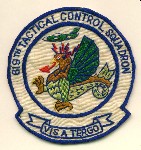 |
Tactical Control Squadron
Kadena
Harmon
Toul, Germany
Birkenfield, Germany
Reactivated: on 1 November 1953, at Spanghahlam, German
Relocated: Toul Rosieres, France July 1954
Relocated: Birkenfeld, Germany November 1955
Notes: Relieved 602nd AC&W 5 December 1955
Deactivation: began 28 April 1958
Inactivated: 18 January, 1959.
Commander:
Major Edward J. Komyati
Major Lowell D. Sollenberger
Activated: 10 December, 1963.
Tan Son Nhut, Viet Nam
Organized: 8 April, 1964.
Inactivated: 15 March, 1973,
Activated: 15 December, 1989.
Equipment: MPS-11; TPS-40
Detachments
11 - Hon Tre Island, in the bay of Nha Trang, Vietnam 1967
Photos, 619 Det 11 TPS-40
Web site: Link
Roster
|
| |
Tactical Control Flight
Schwelentrup, Germany 1980 (Shared site with 629th)
Photos
|
|
| |
Aircraft Control & Warning Squadron
Located: 1 August 1946, Fort William McKinley, Luzon Is. P.I.
Subordinate to: 527th AC&W Group, 85th Fighter Wing, 13th Air Force
Notes: 10 November 1946, reduced to zero (0) personnel
Notes: Personnel and equipment used to man the 619th AC&WS
Notes: 7 November 1946, Squadron was attached direct to 13th Air Force for purpose of operating 13th Air Force Communications School.
Notes: 10 November 1946, reduced to zero (0) personnel
Status Changed: 17 November 1946, and started receiving personnel again.
Notes: 3 December 1946, Classes started
Commanders:
(?) - 23 September 1946, Capt. Andrew D'Elia
23 September 1946 - 14 October 1946, Capt. William E. Pitcher
14 October 1946 - (?),
Capt. John H. Archer
18 November 1946 - (?), Captain Gregory J. Herrenbruck
Notes: As per AG 322 Date Unknown. With the reduction of AAF units in the Philippines they will be redeployed to Guam, status: manned.
Kadena
Johnson
1 August, 1946 – 15 March 1955
|

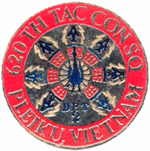
|
Tactical Control Squadron
Vietnam
8 November, 1965 – January, 1973
Detachment 1
Equipment: MPS-11; AN/TPS-40
Detachment 2
Pleiku AB, Vietnam |
| |
Tactical Control Flight
Web Site: Link
|
|

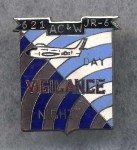
|
Aircraft Control & Warning Squadron
Activated:1 August 1946, Puerto Princessa, Palawan Is., P.I.
Mission: (1) the ground control necessary for the utilization of the air space, (2) the information required for that control, and (3) warning information insofar as the installation is concerned.
Note: Personnel were transferred from Company C, 595th Signal Aircraft Warning Battalion.
Reassigned: 4 November 1946, Headquarters 85th Fighter Wing and its' station at Puerto Princessa, Palawan, Unit.
Notes: 13 November 1946, with the transfer to Florida Blanca of the 12th Airdrome Squadron, the 621st took over the maintenance and operation of the base, in preparation of closing the base.
Note: January 1947, Squadron was reduced to zero personnel starting this date
Mission: Close Palawan Army Air Base. Estimated date: 15 April 1947.
Notes: As per AG 322 Date Unknown. With the reduction of AAF units in the Philippines they will be redeployed to Japan, present status: manned.
Detachment
Located: 1 August 1946 - 31 December 1946, Zamboanga, Philippine Islands
Nagoy
Johnson
Shiroi
Niigata
Sado
Shima
1 August, 1946 – 3 February, 1958
Detachment 23
Redesignated: 27 December 1957, from Detachment 23, 621st Aircraft Control and Warning Squadron to Detachment 23, 611th Aircraft Control and Warning Squadron.
|

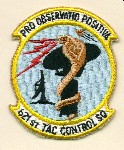
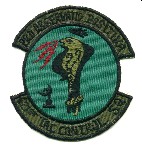
|
Tactical Control Squadron
Located: 1966, Udorn Royal Thai Air Force Base, Thailand
Mission: 1966, Provide 7th Air Force with effective electronic ground environment for management of Southeast Asia West Air Defense Sector.
Inactivated: 31 December 1975, Marking the end of Tactical Air Control System in Thailand
Activated: Around May 1976, Osan AB, Korea
Equipment: TPS-1B
Web Link
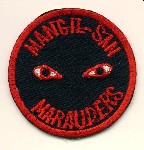 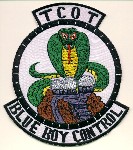
Detachment 1
Detachment 2
Detachment 3
Detachment 4
Udorn RTAFB
CRC
Detachment 5
(1970-1972)
Nakhon Phanom, RTAFB
CRP
Subordinate to: CRC (Det. 4, 621TCS ), Udorn RTAFB; TACC (505TCG), Tan Son Nhut AB, Saigon
Call-sign: Invert
Equipment: 2 each MPS-11's, Serial #001 & 024; (FPS-90 Height finder);
Detachment 12
Sakata, Japan
(1954)
Equipment: TPS-1B
Det.#24
Haranomachi,Japan(approx.300 miles N.E.of Tokyo
Equipment: TPS-1D |
| |
Tactical Control Flight
Wiesbaden, German
Inactivated: 1 October 1986
Equipment: AN/TPS-43E
Notes: Originally Det 1 601st TCS
Roster
|
|
| |
Aircraft Control & Warning Squadron
Rheine Grafenstin, Germany
December, 1948 – May, 1949
Activated: July 1954 at
Otis AFB, Massachusetts as 532nd AC&WG (Mobile)
Discontinued: December 1954
Located: 1958, Brookfield Air Force Station Ohio
Mission: 1958, To maintain radar surveillance and identification and to conduct active Air Defense in accordance with current Tactical Doctrine.
|
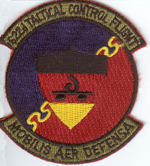
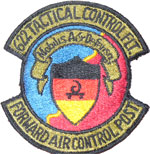 |
Tactical Control Flight
1976 – 1978
1983 - 1985
Notes: Originally Det 5 601st TCS
|
|
.jpg)

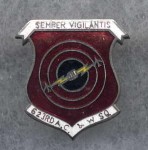
|
Aircraft Control & Warning Squadron
Designated: July 1946 623rd AC&W Squadron
Subordinate to: 1948, 529th AC&WG Spring
Located: 1950, Bisha Gawa area, Okinawa
Mission: 1950, Operate Air Defense Control Center on Kadena Air Force Base and Tactical Control Center on Yontan Mountain for Early Warning, Aircraft Identification, and interception of unidentified aircraft.
Relocated: August 1956 Yozadake (in southern
Okinawa)
Reorganized: 1959, subordinate to 313th Air Defense
Mission: 1959, Centralizing of Identification and Tactical actions, decisions within the Air Defense Control Center, instead of the Air Defense Direction Center.
Commanders:
1986, Major Dennis Moe
Equipment: CPS-1, CPS-4
26 March 1962 – December, 1966
January, 1969 – December, 1970
31 May, 1971 – 30 June, 1973
Detachment 2
Habu Hill,
Kume-Jima AS, Okinawa
Late 1940's |
| |
Tactical Control Squadron
Subordinate units: 81st TCS
Subordinate to: 5th TACG, Suwon AB, Korea
Exercises:
1987
Cope North 87-3
Team Spirit 83
|
|
| |
Aircraft Control & Warning Squadron
Located: Camp Bishagawa, Ie Shima, Okinawa Spring 1948
Subordinate to: 529th AC&WG Spring 1948
Located: 1950, Kadena Air Base, Okinawa
Mission: 1950, man and operate four Early Warning Radar Sites for control of Tactical Aircraft.
Note: 1950, Kume Jima chosen as new radar site.
Mission: 1956, Responsible for Tactical Air Defense activities of the North Sub sector of the Ryukyus Air Defense System.
Relocated: July 1956, From Naha Air Base, to Yae Take Air Station, Okinawa, site on the Motobu
Peninsula
|
|
| |
Aircraft Control & Warning Squadron
Note: 1946, Squadron had no Tactical Operations due to lack of equipment and trained personnel.
Reorganized: 21 December 1949
Note: Squadron attached to 59th Fighter Wing, Elmendorf Air Force Base, Alaska
Notes: Began 24 hour operations on 26 March 1948 until 28 April 1948
|
| |
Air Control Squadron
5 December, 1952 – 13 April, 195
|
|
 |
Aircraft Control & Warning Squadron
29 April, 1947 – 1 May, 1949
Located: Ladd Field, Alaska
Mission: 20 May 1947, to establish, maintain and conduct basic radar school at Ladd Field. Also to operate a detachment at Fort Richardson, Alaska
Notes: Began 24 hour operations on 26 March 1948 until 28 April 1948
Assigned: 8 March 1948, attached to the 505th Aircraft Control and Warning Group, McChord, Air Force Base, Washington.
Note: Instructions concerning Squadron from Group Mission, March 1949:
The 626th Aircraft Control and Warning Squadron, 531st Aircraft Control and Warning Group, currently attached to the 505th Aircraft Control and Warning Group, will establish a modified Control Center in building #207 on McChord AFB, Washington for receiving and plotting information received from the Air Defense Control Center at Silver Lake and radar training sites at McChord AFB, Washington. Establish and operate the following at McChord AFB, Washington:
(1) AN/CPS-1 in the vicinity of building #513,
(a) Establish and operate a modified Air Defense Direction Center therein.
(2) AN/CPS-5 in the vicinity of building #545.
(3) AN/CPS-5 in the 100 area.
Reorganized: June 1948, as a Squadron of the 531st Aircraft Control and Warning Group, McChord Air Force Base, Washington.
Deactivated: 26 April 1949, started and finished on 1 May 1949, some personnel transferred to 505th Aircraft Control and Warning Group
Commanders:
1948, Major Donald E. Good
1948, Major John Kerech
Equipment:
1949, AN/CPS-1 Serial No. 7
Detachment
Location: Fort Richardson, Alaska
|
| |
Tactical Control Flight
Nordholtz, Germany
Wanna, Germany
Bremerhaven
|
|
| |
Aircraft Control & Warning Squadron
|
|
| |
Aircraft Control & Warning Squadron
15 October, 1946 – July, 1955
|
|
| |
Aircraft Control & Warning Squadron
15 October, 1946 – 18 September, 1957
Located: Alexandria Air Force Base, Louisiana; Later renamed England Air Force Base, Louisiana
Relocated: Aviano/Udine, Italy (Mid 50's)
Equipment: MPS-7, MPS-14
Inactivated: 1957
Mission: Control and Reporting Center
Subordinate Units:
Two Control and Reporting Post's
MSQ site (missile tracking)
Exercises:
1955
Operation Lake Major - A NATO exercising of unit mission requirements.
|
| |
Tactical Control Flight
Schwelentrup, Germany
1978 – (?)
|
|
| |
Air Control Squadron
Quarry Heights, England
15 October, 1946 – 16 April, 1948
|
| |
Aircraft Control & Warning Squadron
Activated: July 1954 at
Otis AFB, Massachusetts as the 532nd AC&WG (Mobile)
Discontinued: December 1954
|
|
| |
Aircraft Control & Warning Squadron
15 October, 1946 – (?)
|
| |
Tactical Control Flight
Wurzburg, Germany
1976 – 1978
Notes: Originally Det 4 601st TCS
Roster
|
|
| |
Aircraft Control & Warning Squadron
21 June, 1948 – 1949
Detachment E
Located: 1948/49 Neah Bay, Washington
Web Site: Link
|
| |
Tactical Control Flight
Graffenwoehr, Germany
Notes: Originally Det 6, 601st TCS
Inactivated: 1 August, 1985
|
|
| |
Aircraft Control & Warning Squadron
Wheelus AB, Tripoli, Libya
1950's
Notes: Personnel deployed to Turkey to provide maintenance support for MPS-7 and MPS-14
Equipment: Known to be present 1957 - 1958 MPS-7, MPS-14 TPS-1D, TPS-10D,GPS-4 replaced MPS-7 (GPS-4 was an upgraded MPS-7)
Detachment 2
Misrata, Libya
Notes: Was preferred to as Benghazi, but was actually south of there along the coast at a WWII airstrip Berka 2 (Mike Murry);
Detachment 3
Benghazi, Libya
|
|
| |
Aircraft Control Squadron/Aircraft Control and Warning Squadron/Detachment E/W-1
Note: 21 May 1947, with the activation of the 505th Aircraft Control and Warning Group, Personnel of the the 505th Aircraft Control and Warning Group were transferred in grade from Squadron A of the 412th AAF Base Unit to the 634th Aircraft Control and Warning Squadron.
Note: 1948, Known also as USAF Detachment "E" for security purposes.
Located: 1948, McChord Air Force Base, Tacoma, Washington
Location: July 1948, Silver Lake, Washington, 47° 53' 30" North, 122° 14' West.
Subordinate to: 505th Aircraft Control and Warning Group, McChord Air Force Base, Washington.
Mission: 1948, The manning and administrative supervision of an Air Defense Control Center under direct operational control of the 505th Aircraft Control and Warning Group Headquarters, through the Group Controller stationed at the ADCC at Silver Lake. This includes furnishing personnel to other services or agencies as required for relay of information into the ADCC. Installation, operation, and maintenance of the group administrative and tactical communications center terminating int he ADCC, and any relay stations necessary for the accomplishment of this mission. Continuous training of all squadron personnel, and other (531st) personnel assigned for the purpose of training. Establish necessary security measures at all squadron installations. Planning for assumption of supervision and administration of mess, supply and transportation facilities for the personnel of Group Headquarters. Continuous planning and training toward eventual full scale operations on a 24-hour basis, utilizing such equipment as may be designated by Headquarters, 505th Aircraft Control and Warning Group, to include provision for administration and housing of personnel necessary for accomplishment of full scale operations.
Note: 7 August 1948, unit started 24-hour operations.
Personnel: August 1948, 12 Officers and 193 Enlisted.
Note: 2 September 1948, Orders were cut and published, officially transferring the 634th to Everett (Silver Lake), Washington.
Note: December 1948, The 634th Aircraft Control Squadron operates the Silver Lake Air Defense Control Center - the hub of the 505th AC&W Group's radar network in the Pacific Northwest.
Personnel: December 1948, 14 Officers and 190 Enlisted.
Note: 6 December 1948, 15 hour a day operations began, from 0700 - 2200.
Note: Instructions concerning Squadron from Group Mission, March 1949:
The 634th Aircraft Control Squadron maintains adequate security of own area and detachments. Organizes and maintains on a normal operation basis effective at once an Air Defense Control Center at Silver Lake, Washington, displaying information received from the Air Defense Direction Centers at Paine Field, Washington and Moses Lake Air Force Base, Washington. Maintains F/M relay station at Fort Lawton, Washington. Identification of all aircraft will be made a the Air Defense Control Center on the basis of information received from McChord Flight Service, CAA Boeing, Radio KCJ, and NAS Sand Point, Seattle, Washington. Direction Centers at Paine Field, Washington, and Moses Lake Air Force Base, Washington will be immediately informed of identification. The senior controller at the ADCC will supervise utilization of fighter aircraft controlled by the chief controller at the ADCC's during GCI missions. Furnish the following information to the 626th training center at McChord Air Force Base, Tacoma, Washington (505th Command Post).
(1) All plots on friendly fighters and hostile and/or unidentified tracks.
(2) Status changes for all radar equipment.
(3) Status changes for all communications equipment.
(4) Status on availability of fighter aircraft.
Redesignated: December 1949, From Aircraft Control Squadron to Aircraft Control and Warning Squadron.
Commanders:
21 May 1947, Major John Kersch
July 1948, Captain J.E. Helbert
1 August 1948, Major ?.J. Lobato
June 1949, Major Lewis M. Macomber
1949, Major William M. Moore
1949, Captian Kenneth M. Potter
Equipment:
August 1948, SCR-634 VHF/DF set
November 1948, No radar equipment.
Detachment A
Commanders:
1949, S/Sgt Edwin A. Jansen
Detachment B
Commanders:
1949, S/Sgt John P. Carlson
Detachment M(?)
Located: 1949, US Naval Air Station, Whidbey Island, Washington
Geiger Field, Washington
8 December, 1949 – 6 February, 1952
20 June, 1953 – 1 March, 1961
|
|
| |
Aircraft Control & Warning Squadron/Detachment F/W-4
Activated: 21 May 1947, McChord Air Force Base, Tacoma, Washington
Note: 21 May 1947, with the activation of the 505th Aircraft Control and Warning Group, Personnel of the the 505th Aircraft Control and Warning Group were transferred in grade from Squadron A of the 412th AAF Base Unit to the 635th Aircraft Control and Warning Squadron.
Note: 1948, Known also as USAF Detachment "F" for security purposes.
Location: McChord AFB, Washington, as 31 December 1948
Mission: 1948, Opening, manning and operating an Air Defense Direction Center and Early Warning Radar System west of the Cascade Mountains in such areas as may be designated by Higher Headquarters. Installing, operating and maintaining necessary communications for the relay of information from the squadron air surveillance system to the ADCC at Silver Lake, Washington. Continuous training of all squadron personnel and other (531st) personnel as may be required. Establish necessary security measures at all squadron installations. Continuous planning and training toward full scale operations on a 24-hour basis, utilizing such equipment as may be designated by headquarters 505th Group, to include provision for administration and in using of personnel necessary for the accomplishment of such full scale operations.
Subordinate to: 1948 - 1951, 505th Aircraft Control and Warning Group
Call Sign: 16 November 1948, Choir Able
Note: 6 December 1948, Neah Bay and Pacific Beach detachments turned over to the 531st Group. Personnel were then divided and transferred to Fort Stevens, Oregon and Arlington, Washington.
Note: Instructions concerning Squadron from Group Mission, March 1949:
The 635th Aircraft Control and Warning Squadron maintains adequate security of own area and detachments. Takes immediate action to operate, on a normal operations basis effective at once, an Air Defense Direction Center at Paine Field, Washington, and radar surveillance from existing facilities at Fort Stevens, Oregon, Bohokus Peak, Washington, and Pacific Beach, Washington. Maintains F/M relay stations at Blyn Mountain, Washington, and Capitol Peak, Washington. The radar surveillance stations at Fort Stevens, Oregon, Bohokus Peak, Washington, and Pacific Beach, Washington will report targets to the Air Defense Direction Center at Paine Field, Washington, for plotting and filtering. The Air Defense Direction Center will tell filter tracks to Air Defense Control Center for identification and display. The Air Defense Direction Center may alert and scramble fighter aircraft at McChord AFB, Washington and/or other bases for purpose of GCI.
Relocated: September 1949, Paine Field, Washington
Redesignated: December 1949, From Aircraft Control Squadron to Aircraft Control and Warning Squadron.
Personnel: 1951, 34 Officers, 260 Enlisted and 8 Civilians.
Commanders:
21 May 1947, Lt. William J. Hunter
(?) - July 1948, Captain Leon Howk
July 1948 - 5 January 1949, Major James H. Rose
5 January 1949, Major Garvel Trimble
1949, Major John Kersch
8 August 1951, Major Sidney M. Chesler
Equipment:
1948, AN/TPS-1B, 2 each
July 1948, AN/TPS-10
August 1948, SCR-634 VHF/DF set
September 1948, AN/CPS-1/1B
October 1948 2 each AN/TPS-10A's
November 1948, AN/CPS-5
1948, AN/CPS-4, Serial no. 38 (at Detachment E, Pacific Beach)
1948, AN/CPX-2 (Frequency limits 162 - 174 Mcs (MHz))
April 1949, AN/CPS-1, Serial no. 7, which had been at the 626th
19 May 1949, AN/CPS-1 Serial no. 18
Fort Lawton, Washington
21 May, 1947 – 11 June, 1960
Arlington ADCC/Detachment B
Located: Arlington, Washington, 48° 8' North 122° 10' West
Note: 1948, Known also as USAF Detachment "B" for security purposes.
Note: December 1948, No liberty runs were made to town which was 4 miles away due to gasoline shortage. Personnel had to walk, use private transportation or take a taxi
Note: Arlington ADCC was to be transferred to Paine Field, Washington, on or about 15 January 1948.
Personnel: December 1948, total
personnel 101
Mission: 1949, Provide an Air Defense Area West of the Cascade Mountains.
Reorganized: 5 December 1949, Reorganized and strengthened, by General Order 12
Commanders:
10 October 1948- November 1948, Captain Leon Howk
November 1948
- (?) 1st Lt. Curtis L. Logsdon
Equipment:
Radar
July 1948, AN/TPS-10
October 1948, AN/CPS-1, located fifty feet from the operations shelter. Operated on 2800 Mc (MHz), was used for long range search radar, and was a heavy-weight air transportable set.
October 1948, AN/CPS-4, located seventy feet from the operations shelter. This equipment operated on 2600 Mc (MHz), was used for height finding, and was a heavy-weight air transportable set.
October 1948, AN/CPX-1 IFF set, located fifty feet from the operations shelter. This equipment operated on frequencies 157 to 187 Mc (MHz), was used for interrogation, and was an air transportable set.
March 1949, AN/CPS-1 to move from Arlington to Paine Field, Washington
Radio
October 1948, SCR-188 located in back of the mess hall. This radio set operated on frequency of 6250 Kc (KHz), was used for a back-up line for the controllers line.
October 1948, SCR-399 located at the extreme NE edge of the detachment area. This radio set operated on frequency of 4427 Kc (KHz), used for back-up for the teller line.
October 1948, Very High Frequency equipment consisted of the following:
a. 2 vans East and adjacent with the mess hall.
b. 2 vans North and adjacent with the motor pool.
c. 1 van with the SCR-573 (Direction Finding)
d. 1 van with the SCR-574 (Direction Finding)
Used for air-ground communications, at frequencies 116.10, 135.00, 138.60 140.58, 142.02 and 143.26 Mc (MHz).
October 1948, FM Radio equipment, used for telling line to Silver Lake and administrative line to McChord Air Force Base, Washington, located in communications building at detachment. Operated on Transmit frequencies 83.3, 83.0 93.7, and Receive frequencies 74.5, 75.3 and 90.4.
Miscellaneous
One Jeep
One Ambulance
Two 6x6
trucks
Detachment 1
1950
Equipment: 1951, AN/CPS-5D, AN/GPA-7A
Detachment 2
1950
Bohokus Peak
Located: Cape Flattery, Washington Area
Note: September 1948, served as a site for SCR-270 during last war. From 28 March until 1 May 1948, was the location of an AN/TPS-1B, operated by a detachment of the 635th Squadron. Detection so poor from elevation (1,490 feet) that the set was moved to a site 3 miles away, near the sea-shore. The present site approximately 8 miles away from the peak.
Note: 9 January 1949, a fire destroyed much valuable equipment and halted the construction on the CPS-5. As the result of a fire at Neah Bay, the Bohokus Peak CPS-5 came on line early, approximately mid-February 1949.
Note: December 1949, Permission had been granted from higher headquarters for the movement of the equipment (to Neah Bay(?)), but no action had been taken as of 31 December 1949.
Equipment:
December 1948, installation of AN/CPS-5 about 10% complete.
June 1949, AN/CPS-5, Serial no. 25
Detachment
Located: 1948, Coleville, Washington (AFHRA A0533)
Detachment B
Located: 1949,
Paine Field, Everett, Washington (AFHRA A0533)
Commanders:
25 February 1949, Captain Kenneth Potter
Equipment:
December 1949, AN/CPS-4 Serial No. 4
December 1949, AN/CPS-5
Detachment Fort Stevens/ Detachment C
Note: 1948, Known also as USAF Detachment "C" for security purposes.
Located: 1948, Fort Stevens, Hammond, Oregon, 46° 13' North, 125° 58' West.
Mission: 1948, Early Warning Station (EWS)
Personnel: 31 December 1948, 1 Officer and 73 Enlisted.
Note: December 1948, Barracks for the detachment personnel at Fort Stevens consists of old style permanent type barracks. One building, divided up into 5 dormitories, has space for 96 airmen, so the 73 airmen assigned to the detachment are not crowded. Detachment Commander Wong reported the living space satisfactory for his men.
Security measures in effect at the EWS during December (1948)consisted of 4 guard posts at key points around the detachment area, which were maintained 24 hours a day.
Mission: December 1948, Provide early warning radar coverage within the area limitations of their radar equipment, and in coordination with the other two coastal EWS's (Pacific Beach and Neah Bay). The Fort Stevens EWS could be converted into a Forward Directing Station for special operations activities.
Note: December 1948, During the last of November and month of December (1948) radar personnel at the detachment worked at setting up the AN/CPS-5 radar set, encountering difficulty because of unskilled workers and, primarily, because of the weather. Wind velocities varied from 30 to 65 MPH in the Fort Stevens area, which made erection of the tower section especially hazardous. Rain, snow and low temperatures also slowed down the progress. A lack of trained personnel hindered proper carrying out of mission more than any other difficulty in December.
Note: April 1949, Continental Air Command directed inactivation of Fort Stevens. All equipment to be moved to Pacific Beach, Washington Detachment.
Note: 2 May 1949, complete withdrawal of personnel and equipment from Fort Stevens, Oregon was accomplished 2 May 1949.
Note: November 1949, A request was made to Fourth Air Force for the acquisition of Fort Stevens, Oregon for the installation of a rdar site. As of this date a definite decision has not been made. (AHFRA 0722 pg 1275)
Note: See 759th Aircraft Control and Warning Squadron for further details.
Commanders:
1948, - 14 September 1948, Lieutenant Brooking
14 September 1948 - (?), Lieutenant Suey Wong
Equipment:
Radar
a. October 1948, AN/TPS-1B, Operational 15 hours per day, 7 days a week, 0700 - 2200. Located approximately 1 mile from the detachment orderly room. Transferred February 1949 to 637th Squadron.
b. 28 October 1948, AN/CPS-4, Intended for height finding, but was inoperative. Transferred February 1949 to 637th Squadron.
c. November 1948, AN/CPS-5 (24 November 1948, first two railcars of radar set arrived at Fort Stevens); Operational January 1949.
d. December 1948, BN-2 IFF set, in operational.
e. November 1948,
SCR-575, VHF/Direction Finding equipment, was located approximately 500 yards from the orderly room. The receiver covered frequency range from 100 Mcs (MHz) to 156 Mcs (MHz). Transmitter (SCR-522), rated at 8 watts output and operating on the same frequency range was used to contact aircraft during operational problems. Channel "A" frequency was 135 Mcs (MHz), and was used as the primary DF and Homer frequency. Channel "B" frequency was 138 Mcs (MHz), and was secondary DF and Homer frequency. Channel "C" was 140 Mcs (MHz), and was used for use as Joint Army-Navy aircraft emergency. Channel "D" of 142.2 Mcs (MHz) was for use as Joint Army-Navy common frequency.
1948, AN/CPX-2 (frequency limits 162 - 174 Mcs (MHz))
February 1949, AN/CPS-4 to be moved from Fort Stevens, Oregon to Moses Lake Air Force Base, Washington.
Radio
a. FM AN/TRC-1 transmitters and receivers located approximately three-eighths of a mile from the orderly room. The transmitting frequency of 82.4 Mcs (MHz), receiving frequency 74.6 Mcs (MHz). This equipment was used as a land line back-up.
b. HF SCR-399 located approximately three-eighths of a mile from the orderly room. Transmitter was a BC-610-E, output of 35 watts on a doublet antenna. This equipment utilized on controllers circuit at 4427 Kcs (KHz).
c. HF SCR-188 utilized as DF teller circuit direct between Fort Stevens and Pacific Beach. Remoted to DF van for direct use and contact for transmission of information pertaining to DF teller and/or DF homer. R/T both on 4477 Kcs (KHz).
d. Two each VHF SCR-573's and SCR-574's dismantled and stored.
Miscellaneous
a. Two 2 1/2 ton trucks
b. One 3/4 ton weapons carrier
c. one jeep
Detachment D/Detachment Pacific Beach/W-3
Note: 1948, Known also as USAF Detachment "D" for security purposes.
Formed: 21 September 1948, Pacific Beach, Washington
Operational: 29 October 1948
Note: 6 December 1948, the 531st Group was to take control of 505th Group Detachments at Neah Bay, Bohokus Peak and Pacific Beach (Bohokus Peak left under 505th Group due to on-going construction at the site).
Note: 29 March 1949, Detachment returned to 635th Squadron from 531st Group.
Note: April 1949, Equipment from Fort Stevens, Oregon transferred to Pacific Beach with the closure of Fort Stevens. Detachment notified to conduct training for the Washington Air National Guard previously scheduled to be accomplished at Fort Stevens.
Commanders:
15 October 1948, Captain Glen H. Pipes
1949, 1st Lt. Forest K. Rash
1949, Captain Lester V. Green
Equipment:
11 October 1948, AN/TPS-1B,
19 October 1948, AN/TPS-10A
1948, BN-2 IFF (frequency limits 162 - 174 Mcs (MHz))
2 May 1949, AN/CPS-5, Serial no. 40, Operational 14 June 1949
2 May 1949, AN/CPX-2 IFF set, Operational 14 June 1949
October 1949, AN/CPS-4, Serial No. 38
Detachment E/Station 125/W-2/Site P-44
Located: 1949, Neah Bay, Washington
Mission: Early Warning /Forward Direction Station
Note: 6 December 1948, the 531st Group was to take control of 505th Group Detachments at Neah Bay, and Pacific Beach.
Note: 29 March 1949, Detachment returned to 635th Squadron from 531st Group.
Note: September 1949, Radar installed at Bahabahash, Washington (Neah Bay AFHRA B0722 pg 794)
Commanders:
December 1948, 1st Lt. Ar_p(?)
1949, 1st Lt. Sammy T. Sykes
1949, 1st Lt. Gary A. Stone
1949, Captain Patrick A. Kallean(?)
Equipment:
1948, AN/TPS-1B (secondary)
1948, AN/TPS-10A
August 1948, SCR-624 VHF/DF set
November 1948, BN-2 IFF set
1948, AN/CPX-2 IFF (frequency limits 162 - 174 Mcs (MHz))
October 1949, AN/CPS-4 Serial no. 40 (Damaged on 8 November 1949, by falling tree)
1950, AN/CPS-5 Serial No. 28 (primary)
1950,
AN/GPX-4
Site Photo Circa 1948
Detachment F
Located: 1949, Blyn Mountain, Sequim, Washington
(AFHRA A0533)
Commanders:
1949, Sgt Roy C. Perkins NCOIC
1949, 1st Lt. Donald C. Kalbman
1950, Sgt Roy C. Perkins NCOIC
Roster
|
|
| |
Aircraft Control & Warning Squadron/Detachment G
Note: 21 May 1947, with the activation of the 505th Aircraft Control and Warning Group, Personnel of the the 505th Aircraft Control and Warning Group were transferred in grade from Squadron B of the 412th AAF Base Unit to the 636th Aircraft Control and Warning Squadron.
Note: Unit was activated with permanent station at McChord Field, Washington. The 636th Aircraft Control and Warning Squadron is temporarily stationed at Hamilton Field, California.
Note: 1948, Known also as USAF Detachment "G" for security purposes.
21 May, 1947 – 11 February, 1949
Located: 1947, Halfmoon Bay, California
Note: The furthest outlying station under supervision and jurisdiction of the 505th AC&W Group
Personnel: 31 August 1948, 7 Officers, 2 Warrant Officers and 58 Enlisted.
Relocated: September 1948, Kirtland Air Force Base (Los Alamos and Sandia), Albuquerque, New Mexico.
Mission: 1948, Establish air surveillance system, consisting of one Air Defense Direction Center, two early warning radar stations, for the defense of the Los Alamos and Sandia areas. The 636th Aircraft Control and Warning Squadron will be responsible for the establishment of an Air Surveillance system, consisting of one Air Defense Direction Center and two Early Warning Stations for the defense of Los Alamos and Sandia areas. Install, maintain and operate on Air Defense Direction Center (ADCC) in the vicinity of Kirtland Air Force Base, New Mexico, utilizing one AN/TPS-1B (released from Haywood Specialized Depot) and one AN/TPS-10 to be shipped from Half Moon Bay, California. To install, maintain, and operate in the vicinity of Walker Air Force Base, Roswell, New Mexico, one Early Warning Station; and in the vicinity of Los Alamos, New Mexico one Early Warning Station; each station utilizing one AN/TPS-1B (released from Haywood Specialized Depot). To establish an HF Radio Communications Network, connecting the Air Defense Direction Center with both early warning stations, and connecting the ADCC with the Northwestern Air Defense Control Center at Silver Lake, Washington, via relay through Hamilton AFB. This radio network will be established prior to the installation of the telephone land lines connecting these points, which have been requested by this (Fourth Air Force) Headquarters. After installation of these telephone land lines, the HF Radio Communications networks will be utilized as a back-up for these circuits. Coordinate with other governmental agencies in carrying out the above mission. Establish the aforementioned air surveillance system within a period of 30 days after arrival at Kirtland AFB, and upon completion, will so notify the Commanding General, Fourth Air Force, Hamilton AFB, California. Plans will be made by the 636th Aircraft Control and Warning Squadron to relocate the Air Defense Direction Center at Kirtland AFB, New Mexico, to the northern end of the ridge along the summit of Sandia Mountain, as soon as the Moving Target Indicator equipment becomes available for the AN/CPS-5.
Mission: November 1948, Air Defense Direction Center
Located: Walker AFB Roswell, New Mexico, as of 31 December 1948
Reassigned: 1 March 1949, from 4th Air Force to Fourteenth Air Force.
Note: 10 July 1949, Unit attached to 81st Fighter Wing for administrative and logistics support.
Reassigned: 8 December 1949, 636th Squadron relieved from assignment from 12th Air Force and reassigned to Fourth Air Force, Hamilton Air Force Base, Hamilton, California
Relocated: 1949, McChord Air Force Base, Tacoma, Washington (AFHRA A0533)
Commanders:
21 May 1947, Captain John C. Bonson
July - 15 December 1948, Major Marvin E. Weaver
15 December 1948 - (?), Captain Charles G. Dearing Jr.
16 August 1949, Major Edwin D. Coverly
21 December 1949, Major Walter V. Jacobsen
5 January 1950, Major Paul A. Richardson
Equipment:
Radar
August 1948, SCR-634 VHF/DF set 2 each (in storage)
15 September 1948, TPS-1B 2 each (one in storage)
15 September 1948, AN/TPS-10
September 1948, AN/CPS-1
December 1949, AN/CPS-6B
1950, AN/CPS-4 Serial No. 4
1950,
AN/CPS-5, BN-2 IFF set, 2 each
Radio
December 1948, SCR-399A
December 1948, SCR-624, 2 each
December 1948, SCR-188, 12 each (in storage)
December 1948, AN/VRC-1, 6 each (in storage)
December 1948, SCR-511, 2 each (in storage)
Miscellaneous
December 1948, AN/TTQ-1
December 1948, SCR-625, in storage
Detachment
Located: Sur
Detachment:
Located: Gualala
Detachment
Located: Olema
Detachment
Located: Point Montara
Detachment
Located: Mill Valley
Detachment
Located: Point Reyes
Detachment
Located: Carmel
Detachment (Light Warning Radar Station)
Located: 1949, Wingate, New Mexico
Detachment 1
Located: 1950, Fort Stevens, Oregon (AFHRA A0533)
Operational: 9 June 1950
Detachment 2
Located: 1950, Portland Airport, Portland, Oregon (AFHRA A0533)
Operational: 5 June 1950
Detachment
Located: Walker Air Force Base
Mission: Early Warning Station
Call Sign: December 1948, Peacoat
Personnel: 28 February 1949, 1 Officer and 12 Enlisted.
Commanders:
October 1948 - 26 November 1948, 1st Lt. George W. Brookings
26 November 1948, Lt. R. J. Heister
Equipment:
Radar
October 1948,
AN/TPS-1B
Radio
December 1948,
SCR-399A
Moses Lake
Note: September 1948, Considered to be a better location for the ADDC presently located at Pasco, Washington.
Activated: 16 December 1948, Moses Lake, Washington
Personnel: December 1948, 1 Officer and 33 Enlisted
Note: 27 May 1949, Direction Center completed and operational.
Commanders:
December 1948, Captain John M. Beales
Equipment:
May 1949, AN/CPS-5 Serial no. 56, Primary (five PPI's, later expanded to twelve)
May 1949,
AN/TPS-1B backup
Exercises:
1949
Drummerboy - 1-17 November 1949
Operation Overgreasy
1950
Operation Whipstock - 18 - 24 June 1950
|
| |
Tactical Control Flight
Nordholtz, Germany
Wanna, Germany
Bremerhaven, Germany
Inactivated: 1 October 1986
|
|
| |
Aircraft Control & Warning Squadron/Detachment H/W-5
Note: 21 May 1947, with the activation of the 505th Aircraft Control and Warning Group, Personnel of the the 505th Aircraft Control and Warning Group were transferred in grade from Squadron D of the 412th AAF Base Unit to the 637th Aircraft Control and Warning Squadron.
Note: Unit was activated with permanent station at McChord Field, Washington. The 637th Aircraft Control and Warning Squadron is temporarily stationed at Long Beach Municipal Airport, Long Beach, California.
Note: 1948, Known also as USAF Detachment "H" for security purposes.
Located: 7 April 1948, Long Beach Airport, Long Beach, California (temporary location)
Note: The 637th Squadron was reduced to zero strength and all personnel of the Squadron transferred to the 636th Squadron. After all personnel were transferred to the 636th, the 637 was, while still at zero strength, moved to McChord Air Force Base Tacoma, Washington from its previous location at Long Beach, California. During the month of May 1948, authorization was received to re-man the 637th at McChord Air Force Base, with excess personnel from other squadrons in the Group.
Relocated: 16 April 1948 McChord AFB, Washington
Mission: 1948, Opening, manning and operating an Air Defense Direction Center and an Early Warning Radar system East of the Cascade Mountains, and in such other areas as may be designated by higher headquarters (Half Moon Bay, California). Installing, operating and maintaining necessary communications for the relay of information from the squadron air surveillance system to the ADCC at Silver Lake, Washington. Continuous training of all squadron personnel and other (531st) personnel as may be required. Establish necessary security measures at all squadron installations. Continuous planning and training toward full scale operations on a 24-hour basis, utilizing such equipment as may be designated by headquarters 505th Group, to include provision for administration and in using of personnel necessary for the accomplishment of such full scale operations.
Othello, Washington
Notes: Responsible for a gap-filler radar site at Okanogan, Washington
Note: September 1948, 637th Squadron was assigned the four California locations formerly belonging to the 636th Squadron. The detachments now consisted of: Pasco ADCC, Spokane EWS, Half Moon Bay ADDC, La Jolla, Palos Verdes, and Berkeley.
Personnel: 1 November 1948, 18 Officers and 637 Enlisted.
Personnel: 30 November 1948, 20 Officers and 314 Enlisted.
Relocated: 16 December 1948, Moses Lake, Washington, relocation started this date.
Personnel: December 1948, 20 Officers and 456 Enlisted
Relocated: 26 January 1949, from McChord AFB to Moses Lake Air Force Base, Washington
Note: Instructions concerning Squadron from Group Mission, March 1949:
The 637th Aircraft Control and Warning Squadron maintains adequate security of own area and detachments. Takes immediate action to operate, on a normal operations basis effective at once, an Air Defense Direction Center at Moses Lake Air Force Base, Washington and radar surveillance from existing facilities at Spokane AFB, Washington. Maintain and operate the Radar Training Site at Half Moon Bay, California. Maintain Berkeley, California Detachment on a standby status. Radar surveillance station at Spokane AFB, Washington will report targets to the Air Defense Direction Center at Moses Lake AFB, Washington for plotting and filtering. The Air Defense Direction Center will tell tracks to the Air Defense Control Center at Silver Lake, Washington for identification and display. The Air Defense Direction Center may alert and scramble fighter aircraft at Moses Lake AFB, Washington and/or other bases for purpose of GCI.
Redesignated: December 1949, From Aircraft Control Squadron to Aircraft Control and Warning Squadron.
Reorganized: 8 December 1949, 637th Squadron reorganized minus Half Moon Bay Detachment
Commanders:
21 May 1947, Captain Donald N. Hayes
July - 22 September 1948, Major Ferdinand A. McCally(?)
22 September 1948 - (?), Captain Kenneth Proctor
January 1949, Major William W. Moore
1949, Major Edwin L. Burrill
July 1949, Captain G.F. Gorgel
Equipment:
Radar
February 1949, AN/TPS-1B, (from Fort Stevens, Oregon)
22 March 1949, AN/TPS-10A
February 1949, AN/CPS-4 Serial No. 35, (from Fort Stevens, Oregon)
1948, BN-2 IFF (frequency limits 162 - 174 Mcs (MHz))
1949, AN/CPS-1 Serial no. 7, (loaned to Washington ANG 11 May 1949)
July 1949, Listed as having 3 radar sets. Third probably an
December 1949,
AN/CPS-5
Radio
August 1948, SCR-634 VHF/DF set;
Pasco Air Defense Direction Center/Detachment J
Located: Pasco, Washington, 46° 40' North, 119° 20' West
Personnel: July 1948, 2 Officers and 49 Enlisted
Note: 17 August 1948, Unit shut down until end of the month, due to gasoline shortages.
Personnel: September 1948, 2 Officers and 37 Enlisted
Personnel: October 1948, 2 Officers and 22 Enlisted.
Personnel: November 1948, 2 Officers and 27 Enlisted
Personnel: December 1948, 1 Officer and 41 Enlisted
Reassigned: 7 December 1948, 531st Group would take over the Pasco ADDC
Commanders:
September 1948 - 2 December 1948, 1st Lt. Wilson M. Talbott
2 December 1948, Lt. Sundberg
Equipment:
Radar
July 1948, AN/TPS-1B
July 1948,
AN/CPS-1
November 1948, BN-2 IFF set
Miscellaneous
December 1948, One Jeep
December 1948, Five 6x6 trucks
December 1948, Six 2-wheeled trailers
December 1948, Two water trailers
Spokane Early Warning Station/Detachment H/W-6
Note: Also known as Detachment H for security reasons.
Located: 1948, Spokane Airfield/Air Force Base, Bong, Washington, 47° 37' North, 117° 39' West.
Personnel: July 1948, 1 Officer and 19 Enlisted.
Note: 17 August 1948, Unit shut down until end of the month, due to gasoline shortages.
Personnel: September 1948, 1 Officer and 25 Enlisted
Personnel: November 1948, 1 Officer 13 Enlisted
Note: 19 November 1948, operations ceased due to lack of gasoline.
Personnel: December 1948, 1 Officer and 29 Enlisted
Note: December 1948, Lack of gasoline hindered activities at the station
Commanders:
September 1948 - 1 December 1948, 1st Lt. Glen J. Wood
2 December 1948, Lt. Robert L. Hickman
1949, Captain John A. Helton
1949, Captain Leonard J Swiger
Equipment:
August 1948, AN/TPS-1B, from Pasco Air Defense Direction Center; operated on 1251 Mcs (MHz) (standby)
October 1948, AN/CPS-5, arrived and placed in storage (Primary)
2 November 1948, AN/CPX-2 IFF set, arrived and placed in storage
1948, BN-2 IFF (frequency limits 162 - 174 Mcs (MHz))
Half Moon Bay Air Defense Direction Center/Detachment G
Note: Also known as Detachment "G" for security reasons.
Personnel: September 1948, 2 Officers and 16 Enlisted
Personnel: October 1948, 3 Officers and 48 Enlisted
Personnel: November 1948, 5 Officers and 93 Enlisted
Personnel: December 1948, 5 Officers and 90 Enlisted
Note: May 1949, The Half Moon Bay detachment to provide facilities for summer encampment training of the Air National Guard Aircraft Control and Warning units from 7 August to 4 September 1949 and to furnish GCI training for the 79th Fighter Wing at Hamilton Air Force Base beginning on or about 6 May 1949.
Reorganized: 8 December 1949, Half Moon Bay Detachment, two officers and fifty-two airmen were transferred to the 668th Aircraft Control and Warning Squadron, Half Moon Bay, California. This new squadron is a unit of the 542nd Aircraft Control and Warning Group, Hamilton AFB, California.
Commanders:
September 1948, 1st Lt. W.R. Goode Jr.
October 1948, 1st Lt. Roy W. Holloman
December 1948, Captain Leonard J. Swiger
Equipment:
Radar
September 1948, AN/CPX-1 IFF, operated on 157 to 187 Megacycles (MHz)
November 1948, AN/CPS-1, operated on 2800 Megacycles (MHz)
10 November 1948, AN/TPS-10, received from McChord Air Force Base Washington
Radio
November 1948, CF-1B, carrier 79.5 to 87.5, not used
November 1948, BC-640 two each, 135.00 and 140.58 , not used
November 1948, BC-639, two each, 135.00 and 140.58, not used
November 1948, SCR-573 vans, Direction Finding set, not used
November 1948, SCR-574 vans, Direction Finding set, not used
December 1948, CF-2-B 72.8 to 79.5
December 1948, BC-624 "A" channel 116.10, "B" channel 139-32, "C" channel 135.00, "D" channel 140.58
Miscellaneous
December 1948
One Staff Car
One Jeep
One Weapons Carrier
Two 1 1/2 ton trucks
La Jolla/Detachment M
Note: Also known as Detachment M for security reasons.
Note: 1948, Not operational - guard status only
Personnel: September 1948 - November 1948, o Officers and 2 Enlisted.
Personnel: December 1948 0 Officers and 4 Enlisted.
Reassigned: February 1949, Detachment turned over to 506th Tactical Control Group
Commanders:
September-December 1948, S/Sgt D.L. Naumann
January 1950, Captain John A Helton
Palos Verdes (Estates)/Detachment K
Note: Also known as Detachment K for security reasons.
Note: 1948, Not operational - guard status only
Personnel: September 1948, 0 Officers and 1 Enlisted
Personnel: October/November 1948, 0 Officers and 5 Enlisted
Personnel: December 1948, 0 Officers 4 Enlisted
Reassigned: February 1949, Detachment turned over to 506th Tactical Control Group
Commanders:
September 1948, T/Sgt H.D. Lowenthal
December 1948, T/Sgt Rustin
Berkeley/Detachment L
Note: 1948, Known also as USAF Detachment "L" for security purposes.
Note: 1948, Not operational - guard status only
Personnel: September 1948, 0 Officers and 1 Enlisted
Personnel: October/November 1948, 0 Officers and 2 Enlisted
Personnel: December 1948, 0 Officers and 4 Enlisted
Commanders:
September 1948 - 1949, Sgt V.H. Markwad NCOIC
1949, Captain Gerald S. Harris
1950,
Sgt V.H. Markwad NCOIC
Detachment P
Activated: 6 June 1949 (AFHRA B0722 pg 1199)
Located: October 1949, Moses Lake Air Force Base, Washington
Mission: October 1949, Air Defense Direction Center
|
|
| |
Aircraft Control & Warning Squadron
Activated: May 1950, Mount Bonaparte (LP-6)
Assigned: 1 January 1951 at
Mt. Bonaparte, Washington as the 505th AC&WG
Transferred: 162nd AC&WG 25 May 1951
Relocated: from Mt. Bonaparte to Curlew AFS, Washington 1 December 1953
Relocated: (mid - late 1950's), Wauconda, Washington
Inactivated: on 1 December 1959
Equipment: March 1951, AN/TPS-1B
|
| |
Tactical Control Squadron
|
|
| |
Aircraft Control & Warning Squadron
Activated: December 1956 at
Truax Field, Wisconsin as 37th Air Division
Relocated: Lowther A.S. Ontario, Canada Summer 1957
Transferred: Sault Ste Marie ADS 1 April 1960
Discontinued: 1 July 1963, Turned over to the Royal Canadian Air Force Effective 1 July 1963 (IRISNUM 004113992 Frame 406)
Roster
|
| 640th |
| |
Aircraft Control and Warning Squadron
Located: 1954, Ernest harmon Air Force Station, Stephenville, New Foundland
|
| 641st |
| |
Aircraft Control and Warning Squadron
Located: 1954, Melville Air Station, Labrador, Goose Air Base, Labrador
|
|
| |
Aircraft Control & Warning Squadron
Red Cliff, St. John's, Newfoundland
Equipment: CPS-6B, TPS-502 (Canadian TPS-10D
|
|
| |
Aircraft Control & Warning Squadron
Roslyn ANG, New York
30 April 1948 - 22 March 1949 & 8 December 1949 - 6 February 1952
Web Site: Link
|
|
| |
Aircraft Control & Warning Squadron
Roslyn ANG, New York
30 April 1948 - 8 December 1949
Web Site: Link
|
|
| |
Aircraft Control & Warning Squadron
Located: 1954, (Japan ?)
Roslyn ANG, New York
30 April 49 - April 1958
Commanders:
1954, Major Dombrowski
Web Site: Link
|
| 666th |
| |
Aircraft Control and Warning Squadron
Located: 1951, Hamilton Field, California (Site P-38)
Equipment: 1951, AN/CPS-6B, located on Mount Tamalpais
Commanders:
September 1951, Major Hagen
|
| 668th |
| |
Aircraft Control and Warning Squadron
Located: December 1949, Half Moon Bay, California
Subordinate to: December 1949, 542nd Aircraft Control and Warning Group
Note: 8 December 1949, 637th Squadron reorganized minus Half Moon Bay Detachment. Two officers and fifty-two airmen were transferred to the 668th Aircraft Control and Warning Squadron, Half Moon Bay, California. This new squadron is a unit of the 542nd Aircraft Control and Warning Group, Hamilton AFB, California.
Note: See 637th Aircraft Control and Warning Squadron, Half Moon Bay Detachment.
|
|
| |
Aircraft Control & Warning Squadron
Located: Roslyn ANG, New York
28 March 1949 - 1 April 1949
Detachment 1 - 19 April 1949 - 19 May 1949
Detachment 2 - 19 April 1949 - 10 June 1949
Detachment 3 - 19 April 1949 - 19 May 1949
Activated: December 1956 at
Ayracuse AFS, New York as 32nd A.D.
Relocated: Barrington AS, Nova Scotia, Canada Summer 1957
Discontinued: 1 June 1962
Web Site: Link
|
|
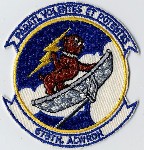 |
Aircraft Control & Warning Squadron
Tyndall AFB
Notes: Operated the third phase of the mobile radar program and supported the BOMARC program |
712th |
| |
Air Special Operations Center Squadron
Roster
|
|
|
|
|